When it comes to Heeler dogs, you may think that are specific breeds that fall under this umbrella. However, Heeler actually refers to the Australian Cattle dog or Queensland Heeler, famous for herding livestock and traversing the rough terrain of Australia.
So, if you’re looking for information regarding the different types of Heeler dogs, we’ve researched and composed an article rife with more information about healers, and what dog breeds share the same qualities and traits.
What is a Heeler Dog?
To sum up, a Heeler dog is not a group like the sporting or herding group, nor does it refer to a select few breeds. A Heeler dog is an Australian Cattle dog, a herding breed that originated in Australia or the Queensland Heeler from New South Wales.
The Australian Cattle Dog
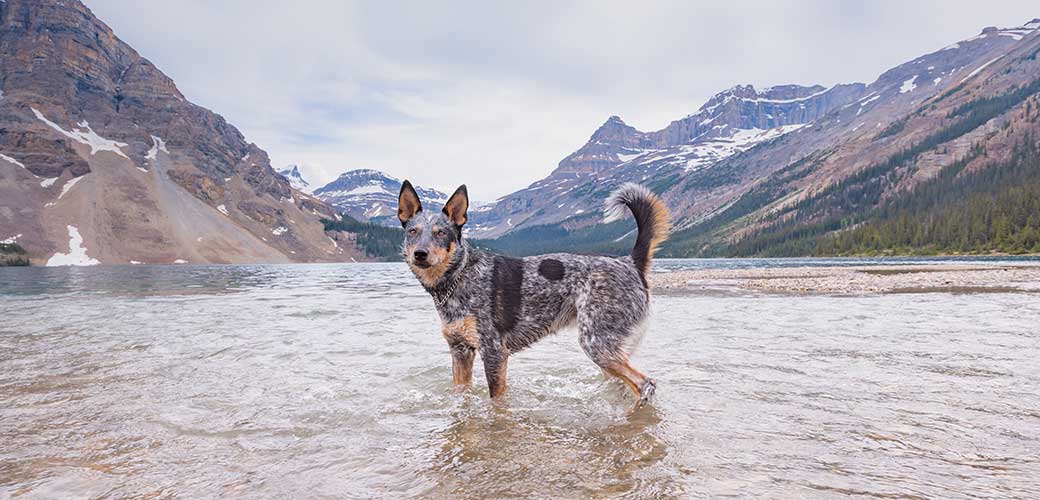
Originally bred during the 1800s, Australian Cattle dogs are a force to be reconned with. They are lean, agile, energetic, and unnervingly intelligent, which is why they were used as herding dogs.
To this day, this dog breed is valued by hunters, cattle breeders, and hiking and sports enthusiasts. Not to mention in active households across the US and Australia. By 1980, the breed was formally recognized by the American Kennel Club and is also recognized by the Australian National Kennel Council, the New Zealand Kennel Club, and the Canadian Kennel Club. In fact, the breed is so well loved that you can easily access detailed information about them online via a dedicated page owned by the Australian Cattle Dog Club.
However, although the Australian Cattle Dog is a working dog by nature, that doesn’t mean to say it won’t make a valuable and endearing family pet. Like other dogs meant for work life, they can make incredibly loyal, watchful, and affectionate companions.
Other Names for the Australian Cattle Dog
Australian Cattle dogs are also referred to by many names, including the Queensland Heeler, Australian Heeler, Australian Stumpy Tail Cattle Dog, Red Heeler, and Blue Heeler. These are simple nicknames but can also refer to the dog’s coat color. For example, the Blue Heeler is known for having a blue/grey coat, whereas the Red Heeler has a beautiful red coat color.
A note on coat coloration: Having said this, Australian Cattle dog puppies are typically born with white hairs, so it can be difficult for pet owners to determine which shade their coat will turn. Generally, they tend to resemble their parents, so as they grow, the blue, red, or black hairs will start to form.
Attributes of a Heeler-Type Dog
Getting a Heeler hound for your own can be beneficial if you need help rounding up livestock or looking for a running buddy. Since they are incredibly smart and active dogs, they can keep up with those who love being in the great outdoors.
It’s safe to say that all different Heeler breeds will have a similar temperament and require access to the same levels of exercise, high-quality dog food, and other necessities.
Generally, Blue Heelers, and dogs closely related to them, are not recommended for the elderly or households that can’t keep up with their exercise and mental stimulation needs. These dogs are made for activity and, like other animals, will resort to bad habits and destruction if they are not fulfilled mentally or physically.
Types of Heeler Dogs – 5 Popular Mixed Breeds
Below are five popular mixed breed dogs with the same parent, the Blue Heeler. Although only five are mentioned here, there are actually several other Blue Heeler cross breeds that you could also look into.
1. Texas Heeler
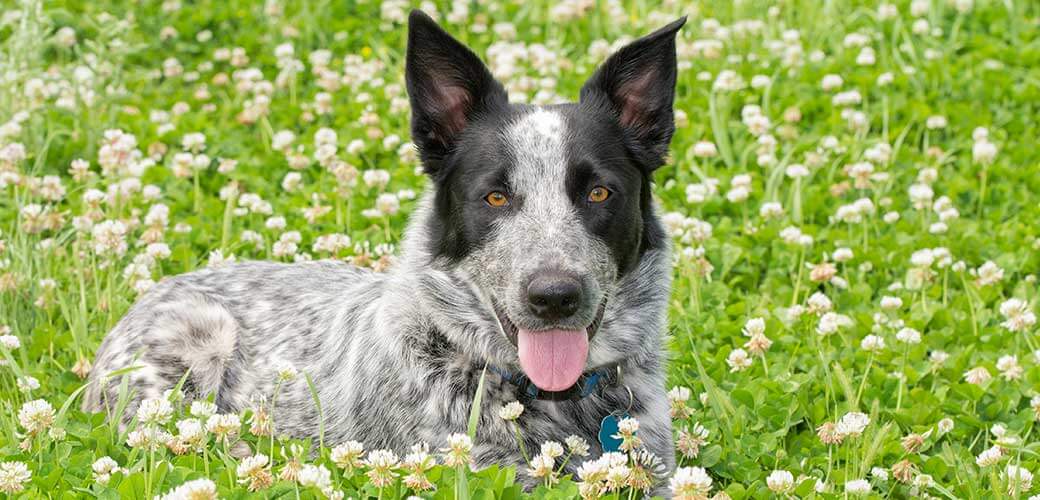
- Parents: Australian Shepherd & Australian Cattle dog (blue coat)
- Height: 17-23 inches
- Weight: 35-65 pounds
- Lifespan: 12-16 years
The Aussie Heeler is one of the most popular types of Heelers around, especially amongst ranchers. The hope was to make what could be the perfect herding dog by breeding two of the best available.
As you can imagine, Texas Heeler dogs inherited a few of their parent’s better qualities. To begin, they are well intuned with their herding instincts and also highly intelligent. In addition, Texas Heelers will inherit their parent’s weather-resistant coats and can be an array of colors and markings, including red speckled, tan, blue, blue mottled, etc.
The drawback to having two different parents is that these pups are now open to more health conditions such as eye complications, hip dysplasia, etc. However, it’s not inevitable that they will develop any during their life.
2. Labraheeler
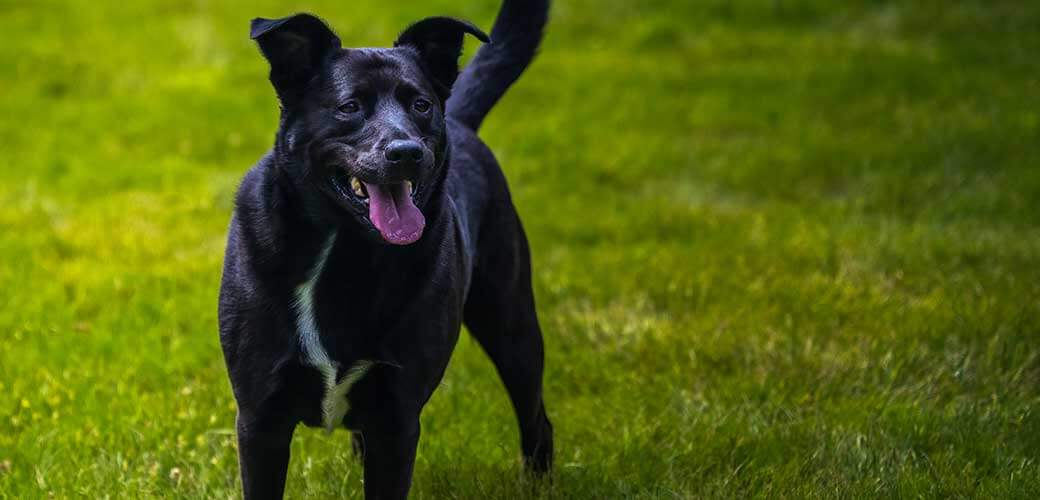
- Parents: Labrador Retriever & Australian Cattle dog (blue or red heeler)
- Height: 17-25 inches
- Weight: 35-80 pounds
- Lifespan: 10-16 years
Like other mixes on our list, the Labraheeler comprises two of the most popular and well-loved dog breeds; the Australian Cattle dog and Labrador Retriever. Sweet-natured and loyal, this mixed breed dotes on their families but will still crave daily mental and physical activity to keep them happy and healthy.
Labraheelers have the potential to grow to the size of either parent but are still considered medium-sized dogs. Typically, they will gain a thicker coat thanks to their Blue Heeler parent, which means they can withstand colder climates better than their Lab parent.
Since Blue Heelers are blue speckled, their coat markings and colors may vary depending on the coloring of the Labrador. For instance, if the Blue Heeler is bred with a chocolate labrador, your pup may have chocolatey colorings and/or undertones.
3. Blue Heeler Border Collie Mix
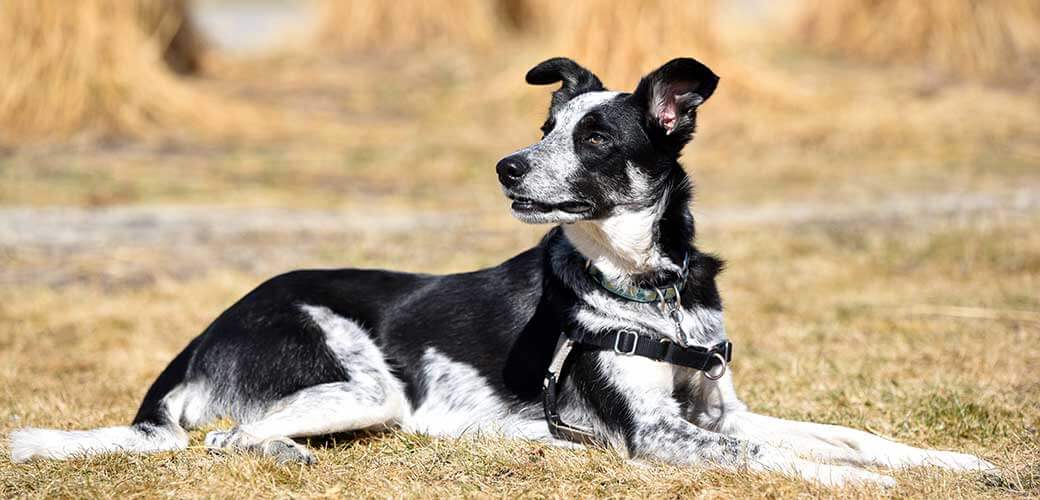
- Parents: Border Collie & Australian Cattle dog (Blue)
- Height: 17-20 inches
- Weight: 30-55 pounds
- Lifespan: 13-17 years
Here we have a mixed breed that is made up of two of the most intelligent dogs out there. You may want to steer clear if you’re an aspiring dog owner with zero experience with high-energy dogs. Since both Border Collies and Queensland Heelers are bred specifically as working dogs, any pups they parent will always follow in their footsteps.
So, it’s safe to say that the Border Heeler is a dog with copious energy and an unquenchable thirst for activity. However, this doesn’t necessarily mean they must be put to work to keep them stimulated. For homes that must have this mixed breed, there is plenty you can do to keep them active, including enrolling them in regular agility training and dog sports.
4. Blue Heeler Pitbull Mix
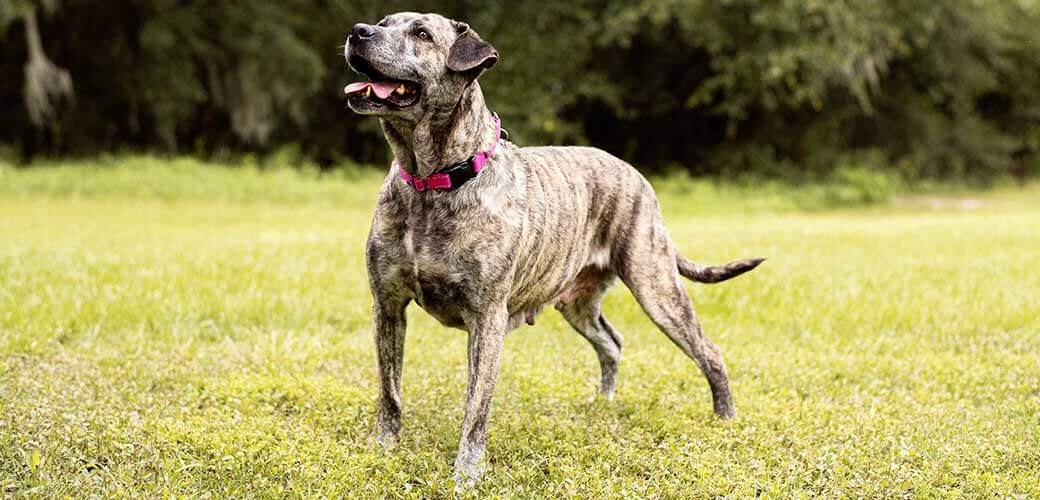
- Parents: American Pitbull Terrier & Australian Cattle dog (Blue)
- Height: 17-24 inches
- Weight: 36-60 pounds
- Lifespan: 12-15 years
In conjunction with the Blue Heeler’s agility, this mixed breed is also muscular and strong thanks to their Pitbull parent. Whereas Blue Heelers are known as working dogs, Pitbulls don’t have a similar history but are renowned for being sweet-natured and affectionate. You’re left with an intelligent, strong, and loving pup when you put these two dogs together!
Although this cross’s parents are quite different in build, pups of the two tend to inherit a stockier build from their Pitbull parent. As a result of their heritage, they may develop herding behavior and require a lot of activities to keep them entertained otherwise, they can misbehave.
5. Blue Heeler Cocker Spaniel Mix
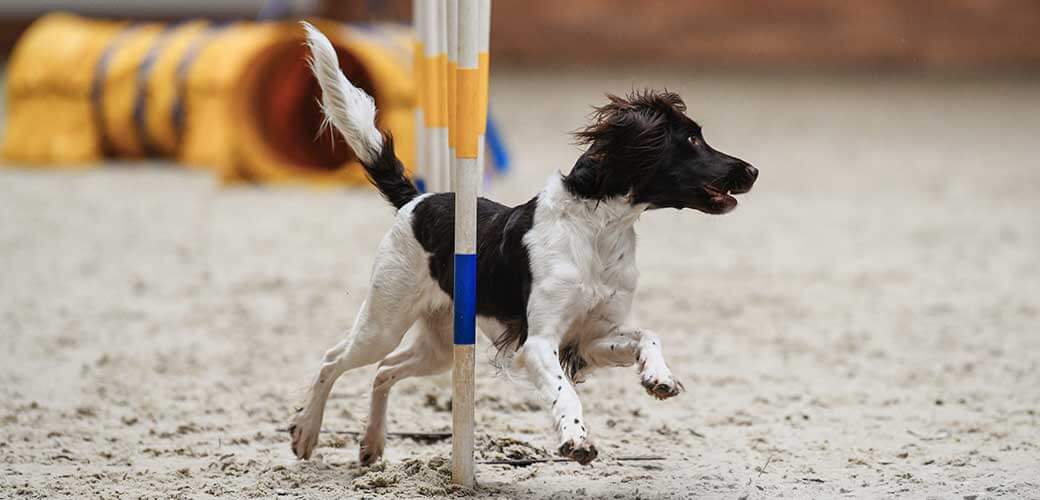
- Parents: Cocker Spaniel & Australian Cattle dog (blue)
- Height: 15-20 inches
- Weight: 28-45 pounds
- Lifespan: 10-14 years
Cocker Spaniels are incredibly sought-after in many places, including the US and the UK. This dog breed is also famous for being highly intelligent and active, so when you combine this dog’s qualities with those of the Blue Heeler, you will be left with a pup with an endless supply of energy and smarts.
Moreover, the Blue Spaniel is among the friendliest and happiest cross breeds. However, if you own one of these crosses for working purposes, you may notice that they are immensely and somewhat aggressively focused canines when herding or hunting.
5 Dog Breeds Similar To Blue Heelers
Since we’ve established that there aren’t specific types of Heeler dogs, we have picked out several dogs that share very similar qualities to that of Australian Cattle dogs. These are especially renowned for herding cattle and other livestock and being smart and intelligent with the addition of some unique qualities that make the breed stand out.
1. Border Collie
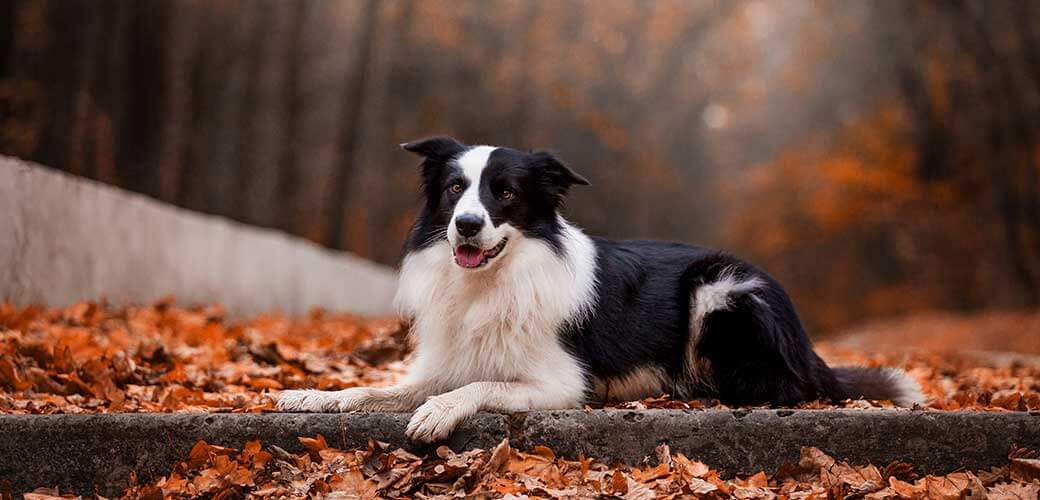
- Group: Herding
- Height: 18-22 inches
- Weight: 30-55 pounds
- Lifespan: 12-15 years
The Border Collie is a famous breed known for its masses of energy, high intelligence, and incredible stamina. It’s safe to say that these dogs are made to work outdoors and grace their families with adoration and affection.
In relation to Red and Blue Heelers, the Border Collie could very well be the same breed as they have so many traits in common. Although they look different, both are hard-working and pick up training easily. Both dogs thrive on jobs given by their owners and adore praise for their hard efforts. Furthermore, both are alert and love to play, especially with young children.
2. German Shepherd
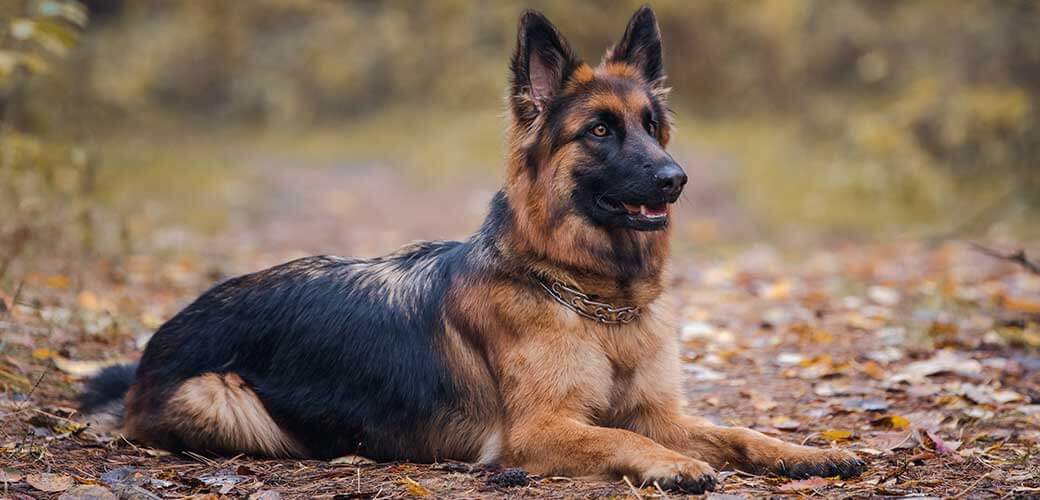
- Group: Herding
- Height: 22-26 inches
- Weight: 50-90 pounds
- Lifespan: 7-10 years
German Shepherds are much larger than Australian Cattle dogs, but they are still valuable herding dogs. In recent years they are more common in homes than on farms despite being an energetic breed. Like Blue Heelers, these dogs are hard workers and require significant mental stimulation to keep them from turning to destruction.
In addition, they are also exceptionally playful and adore playing with younger children who can keep up with them. This tends to be why many families depend on the breed as they can also be infinitely affectionate, playful, loyal, and protective.
3. Australian Shepherd
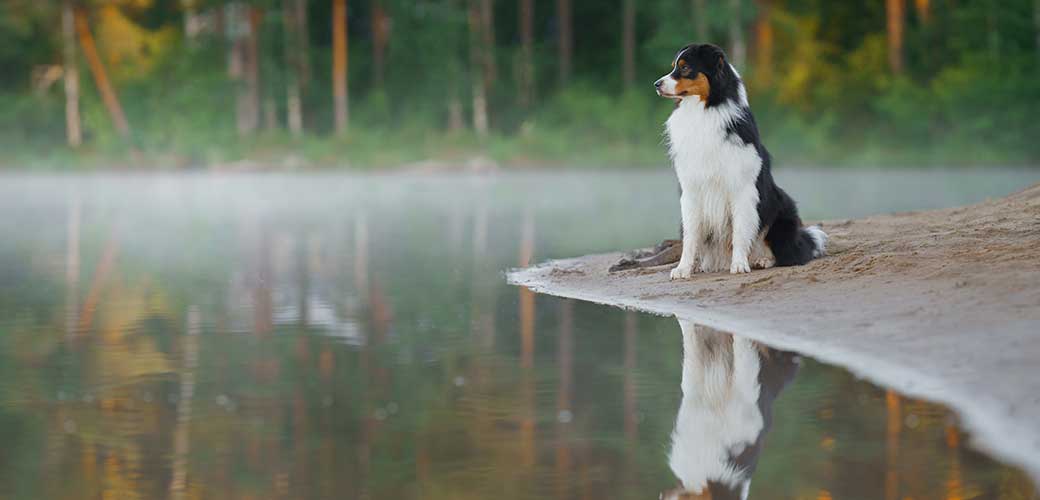
- Group: Herding
- Height: 18-23 inches
- Weight: 40-65 pounds
- Lifespan: 12-15 years
Like the legendary dog featured throughout this piece, the Australian Shepherd is a famous work-orientated cattle dog. Much like the other Heeler types featured here, they are especially talented in their field of work (pun intended) and are impeccably intelligent.
It’s said that these dogs can turn to bad habits if they are not entertained or exercised. Moreover, they are typically not recommended for first-time dog owners as they occasionally try to push boundaries and pull the wool over your eyes if you’re not careful or paying attention.
4. Old English Sheepdog
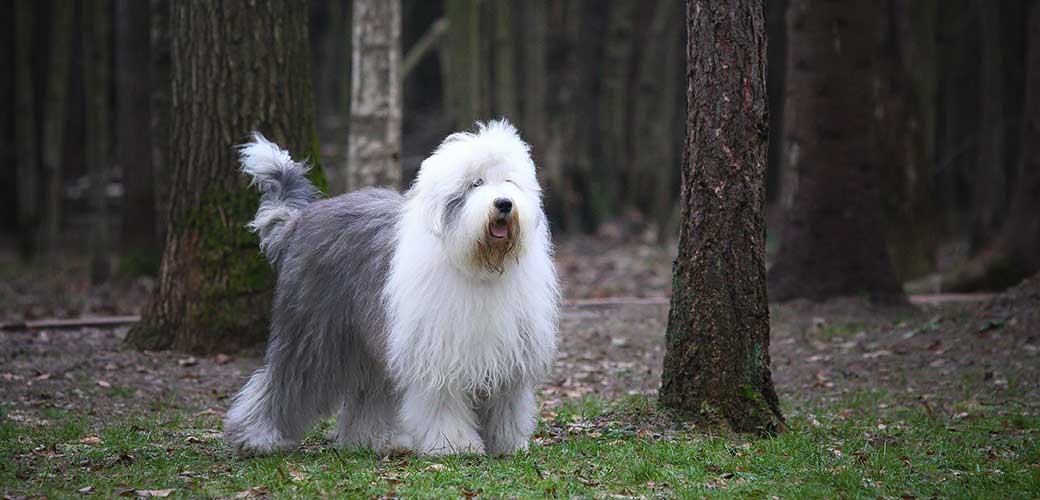
- Group: Herding
- Height: 21+ inches
- Weight: 60-100 pounds
- Lifespan: 10-12 years
Unlike other breeds featured here, the Old English Sheepdog is a gentle and mellow canine known for its unique shaggy coat. Having said that, since they are used as herding dogs, they are naturally very smart and attentive.
One big difference between the Blue Heeler and Old English Sheepdog is their grooming needs. As you can imagine, the OES requires frequent grooming due to their long, thick double coat, whereas the Blue Heeler will only rely on the occasional brushing. In addition to this, the OES can also weigh a lot more due to their powerful and muscular build
5. Pembroke Welsh & Cardigan Corgi
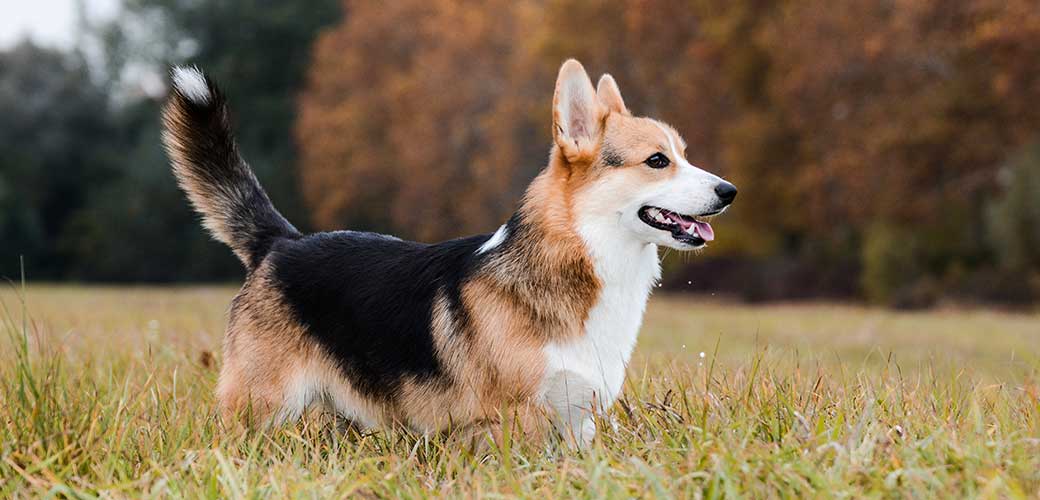
- Group: Herding
- Height: 10-13 inches
- Weight: Pembroke: Up to 30 pounds. Cardigan: 25-38 pounds
- Lifespan: Pembroke: 12-13 years. Cardigan: 12-15 years.
Corgis, regardless of the type, are affectionate dogs. Interestingly, you may not expect Corgis to be a part of the herding group, but they are especially talented at herding livestock. This would be achieved by nipping the backs of the animal’s heels to encourage them to move in the desired direction. So in this regard, you could call them ‘Heelers’ to make a pun.
The size of the Corgi only went in their favor, and to add, a Corgi is typically a stumpy tail dog. Many working dogs will have a short tail to meet breed standards and prevent injury when herding.
Heeler Dogs – End Note
Although these breeds and mixes have a lot in common, it’s important to remember that individual dogs will have their unique traits and personalities. The information above describes the typical temperaments and expectations related to them.

